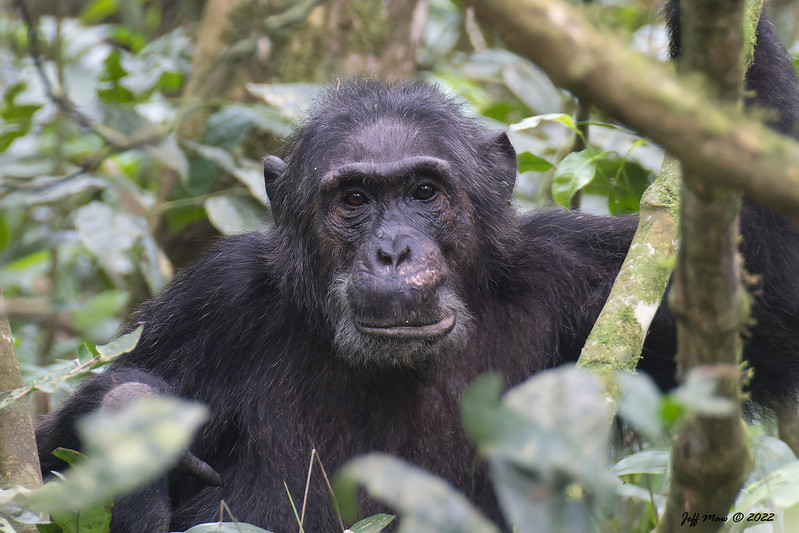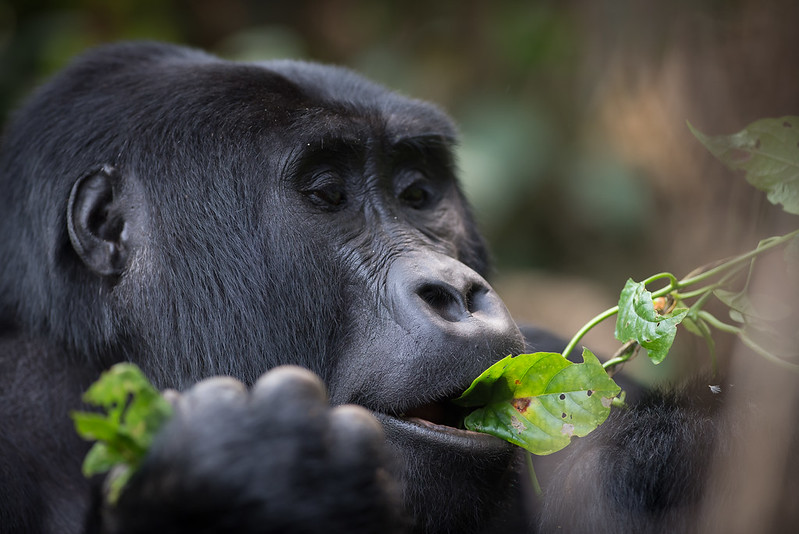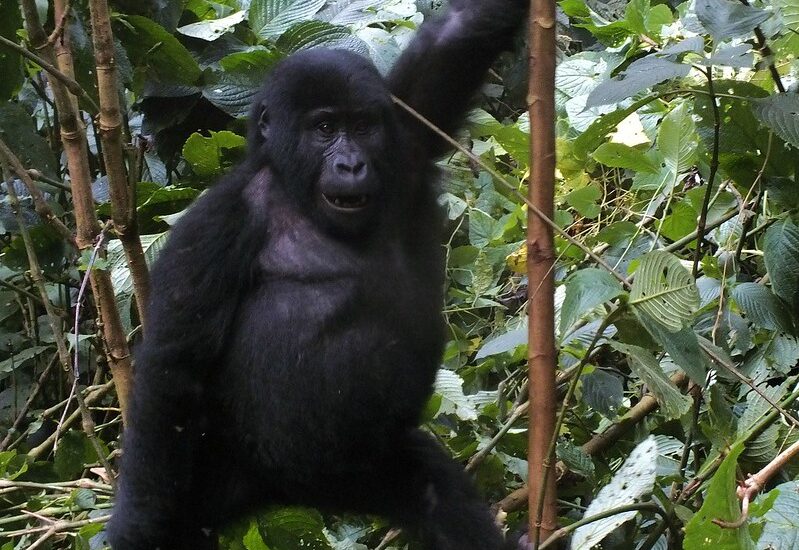Chimpanzee trekking price increase. Every two years, the Uganda Wildlife Authority (UWA) reviews the conservation…
MOUNTAIN CLIMBING/ VOLCANO HIKING IN UGANDA
Mountain climbing/volcano hiking in Uganda is breathtaking. No one would know unless you organized a Ugandan safari for firsthand encounters. Uganda is noted for being rich in animals and surrounded by water basins. Aside from that, there are several mountains in Uganda, and volcano climbing is quickly becoming popular following the famed gorilla trekking in Uganda. These mountains are distinguished by a diverse flora cover, crater lakes at the summit, animal species, glaciers, and white snow, among other features. These are some examples:
![]()
Mt. Elgon
The extinct volcanic mountain is located in the eastern area bordering Kenya, and it is home to the sabiny and Bagisu people of the Mbale district. Mount Elgon is now Africa’s eighth highest peak and the fourth highest in East Africa. Its tallest wagagai mountain is 4,321 meters above sea level and stands out at 5,895 meters.
Mountain Elgon is distinguished by various vegetation coverings that are determined by height; as altitude increases, so does the shift in flora. Open moorland to montane forest covers the lower elevations. Mount Elgon is also a significant water catchment area as a result of several water falls, including the well-known Sipi Falls.
Mount Elgon has a vast caldera crater lake at the summit, hot springs, caverns, and fauna species in the bottom, in addition to flora. Elephants, duikers, bushbucks, antelopes, leopards, and hyenas are occasionally observed, as are primates such as blue monkeys, red-tailed monkeys, and black and white colobus monkeys, among others.
During the trek to the summit, you will be able to see all of Elgon’s intriguing and stunning surroundings. During hiking, there are two alternate pathways to choose from:
The Piswa path is considered mild, with less steeps, yet it takes around 4-5 days to reach the peak.
The Budadiri/Sasa path begins in Mbale town. It is shorter than Piswa, but it requires tough trekking, thus you must be an avid hiker.
Depending on the group’s speed, the trek takes 3-4 days to reach the peak.
Mountains of the moon (Rwenzori mountains)
Because of its unique characteristics and surroundings, the snowcapped glaciers peak is one of the most revered mountains. Mountain Rwenzori dominates Uganda, while the other falls in the adjacent Democratic Republic of the Congo in central Africa. At its greatest elevation of 5109 meters above sea level, Mt Stanley, Margherita summit is the third tallest in Africa.
The Rwenzori Mountains are well-known for their breathtaking vistas. With so many ranges supporting a diverse spectrum of animal species, various vegetation cover, including bamboo, alpine, and heather zone, waterfalls, mountain climbing/volcano trekking, flora, and fauna.![]()
Rwenzori mountain is ranked 9th in the world for climbing sports and hiking safaris due to its diverse features. The Rwenzori Mountains are also home to 70 animal species, including Albertine Rift Valley endemics and uncommon species found nowhere else. Elephants, blue monkeys, bushbucks, antelopes, Angola monkeys, which are commonly seen in the wooded zone, and reptiles like as the three-horned chameleon are among the most notable.
It is also recognized as a bird sanctuary, since it is home to over 200 bird species, including 17 endemics. A Long-eared owl, Blue-headed Sunbird, Golden-winged Sunbird, white-starred robin, Rwenzori Turaco, cinnamon chested bee-eater, and many other birds are among these.
There are several pathways that take 7 to 8 days to reach the top. The majority of trekkers’ goal is not to reach the peak, but to experience the various forest cover. Among the trails are:
The Bakonzo, the most of whom live in the neighboring region, operate Central Circuit. This is one of the simplest paths to the peak.
The Kilembe trek is only suggested for experienced hikers due to the difficulty of reaching the peak.
Mountains of Virunga
The Virunga Mountains are a range of eight extinct volcanic mountains that span Uganda, Rwanda, and the Democratic Republic of the Congo. The three volcanoes, however, are located in southern Uganda, near the Mgahinga gorilla national park. These volcanoes have a fantastic spark in their eye. Seeing the most endangered animals, such as primates and natural life. As you trek the volcanoes, you may see rare endemics like as golden monkeys and mountain gorillas.
Uganda’s Virunga mountain ranges include:
Gahinga Mountain
It is part of the Mgahinga Gorilla National Park, however it is shared with Rwanda. The term Gahinga comes from the Kinyarwanda word for a mound of stones. That swept away after a volcanic explosion to create a mound. At the peak of the volcano, there is a wetland and a caldera lake. The highest point is 3474 meters above sea level.
Muhavura Mountain
Mount Muhavura, at 4127 meters above sea level, is the tallest of the three volcanoes. It boasts panoramic views of Lake Edward and the Rwenzori Mountains from the summit. Mountain climbing/volcano trekking is available along the Uganda-Rwanda border and may be accessible in either direction. The trek to the peak takes between 5 and 8 hours, depending on physical health and hiking expertise.
Sabyinyo
Mount Sabyinyo is located on the border of three countries: Uganda, Rwanda, and the Democratic Republic of the Congo. It is distinguished by three peaks with rocky terrain shaped like teeth, from which the term sabyinyo, which literally means “old man’s teeth,” was formed. The elevation of Mount Sabyinyo is 3645 meters above sea level. The most intriguing aspect about sabyinyo is that you are present in three nations when at the summit.
Getting ready for Mountain climbing
To have a good climbing experience, you must plan ahead of time and emotionally and physically prepare yourself. Remember, it’s all about hiking, so start taking lengthy walks if you’re not a frequent hiker.
For stability on the ground, you’ll need decent, comfortable hiking boots. The harsh landscape is made up of massive stones and boulders.
You must bring energy-giving snacks as well as enough of drinking water to stay hydrated.
Rain coats, safe sleeping bags, warm sweaters/jackets, gardening gloves, scarfs, and other personal goods are also required.
Walking sticks are crucial and should not be overlooked.


